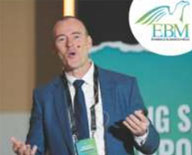
Cleaning and Disinfection is a crucial element of a Contamination Control Strategy.
The EudraLex – Volume 4 – Good Manufacturing Practice (GMP) guidelines Annex I states: “A contamination control strategy (CCS) should be implemented throughout the facility to define all critical control points and assess the effectiveness of all the controls (design, procedural, technical and organisational) and monitoring measures employed to manage risks to medicinal product quality and safety.”
A significant weapon in the armoury available to the manufacturing site for microbiological control will be the sites’ implementation of suitable cleaning and disinfection processes in their controlled and classified areas.
Whilst it seems simple enough to ‘soak’ surfaces with any antimicrobial or biocidal chemicals, the devil is in the detail if a site wants to achieve consistent and effective contamination control.
Annex 1 gives some significant additional clarity and detail on what is required for Cleaning and Disinfection. This article will broadly consider the aspects covered by the regulation related to,
• Disinfectant Qualification and Validation,
• Residues of cleaning and disinfection agents,
• Disinfectant Rotation and
• Material transfer (or the movement of materials into controlled areas).
Content:
Disinfectant Qualification and Validation requires detailed planning – Whether you are working on the construction of a new cleanroom suite or working with an established operation.
The requirement to validated is clear:
“The disinfection process should be validated. Validation studies should demonstrate the suitability and effectiveness of disinfectants in the specific manner in which they are used and on the type of surface material, or representative material if justified, and should support the in-use expiry periods of prepared solutions.”
EudraLex – Volume 4 – Good Manufacturing Practice (GMP) guidelines, Annex 1. Manufacture of Sterile Medicinal Products (August 2022)
Annex 1 now specifies that the validation will need to align to the specific manner in which the disinfectant is being used —i.e., wiping, spraying, fogging, etc. — and on the cleanroom surface on which it will be used. In addition, high risk or problematic surfaces to disinfect may need to be identified and rationalized in the CCS assessment.
Annex 1 also states that the validation “should support the in-use expiry periods of prepared solutions.” This is not limited to dilutions made from concentrate, but also applies to ready-to-use (RTU) trigger sprays and pre-saturated wipes.
Whilst there is no regulatory requirement to use a specific test method for disinfection validation in a pharmaceutical setting, USP chapter <1072> is commonly referenced. However, this is not a prescriptive method, it is more a guidance document of points to consider. Another approach is to use standard methods such as the European Norms (EN). Disinfectant suppliers use these methods to demonstrate a biocidal label claim for a particular disinfectant and provide registration data for any country specific agencies that require it. However, the methods are not designed with only the pharmaceutical industry in mind. Following these methods without adaptation to better reflect pharmaceutical manufacturing conditions may lead to failures in the validation. Reputable disinfectant suppliers to the pharmaceutical industry are aware of these pitfalls and can readily advise you on the best methods to employ when looking to validate a new sanitizer or disinfectant.
Local environmental isolates (known as in-house isolates or strains) must also be used within disinfectant validation. A reference organism such as those from the American Type Culture Collection (ATCC) are the standard or representative example of a particular genus, but it is a rare facility that finds its most common environmental monitoring isolates to be the same species or even genus as the reference organisms. Therefore, the site must include its commonly recovered environmental isolates in the disinfectant validation. This is to ensure that any genus likely to be encountered in the facility is tested to ensure the disinfectants to be used are effective against them, and because it is also well understood that different ‘wild type’ strains within the same genus could potentially have different levels of sensitivity to chemical disinfectants.
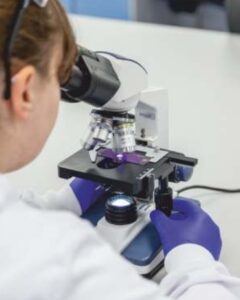 How the disinfectant is used in a facility will also impact on the disinfectant validation method. Three factors which will heavily influence the validation outcome include
How the disinfectant is used in a facility will also impact on the disinfectant validation method. Three factors which will heavily influence the validation outcome include
(1) the test surface,
(2) the wet contact time and
(3) the method of disinfectant application i.e., spraying alone versus manual wiping.
The test methods used by suppliers to create sanitizer and disinfectant label claims are based on the use of a single test surface: a coupon made of stainless steel. While stainless steel does make up a significant element of the materials within a manufacturing area, it is often not the most prevalent surface compared to wall or floor materials. Different surfaces will have an impact on how a disinfectant will cover a surface. For example, a hydrophobic surface will reduce the surface area that disinfectant droplets will cover. These surface properties should be assessed ahead of validation.
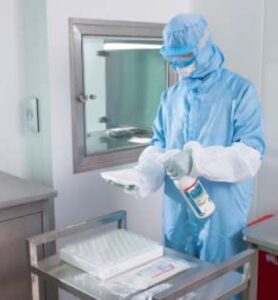 The wet contact time used in the validation at a site must reflect how and where the disinfectant is used in practice. It is often desirable in areas of high airflow (where there is a significant drying effect) to have as short a contact time as possible, to avoid repeated reapplications of disinfectant. Not considering the actual conditions may lead to the development of wet contact times which are unachievable in a cleanroom setting.
The wet contact time used in the validation at a site must reflect how and where the disinfectant is used in practice. It is often desirable in areas of high airflow (where there is a significant drying effect) to have as short a contact time as possible, to avoid repeated reapplications of disinfectant. Not considering the actual conditions may lead to the development of wet contact times which are unachievable in a cleanroom setting.
The final important element of a disinfection process is the incorporation of mechanical action when applying a chemical agent to a surface. Mechanical action of applying disinfectants by wiping or mopping, on a surface may enable a disinfectant to have a greater area of coverage by overcoming surface tension on hydrophobic surfaces. In addition, any potential physical or chemical contamination remaining on a surface may be removed by using a correct application technique. Finally, mechanical action can also aid in removal (not killing or elimination) of any organisms, such as bacterial spores, which may not be destroyed by a broad- spectrum biocide.
Residues need to be removed first for disinfectants to be effective. The most recent revision of EU Annex 1 now discusses the importance of removing, via cleaning, residues from surfaces. This includes those residues created by the manufacturing process or from the application of certain disinfectants.
“For disinfection to be effective, prior cleaning to remove surface contamination should be performed. Cleaning programs should effectively remove disinfectant residues.”
EudraLex – Volume 4 – Good Manufacturing Practice (GMP) guidelines, Annex 1, Manufacture of Sterile Medicinal Products (August 2022)
This clarifies that cleaning, and disinfection are two distinct activities trying to achieve different things. Cleaning is the removal of physical and chemical contamination, often in preparation for the subsequent application of a disinfectant agent. Disinfection is the use of a chemical agent with biocidal activity against microorganisms.
Many traditional and well used disinfectants, such as quaternary ammonium compounds, amines and amphoteric formulations, leave significant residues on a surface, which may have a detrimental effect on the effectiveness of any disinfectant subsequently used.
Chemical disinfection requires the direct contact between the microbial cell and the chemical molecules. Physical residues may also prevent this contact either through shielding the microorganisms from direct contact, or through chemical deactivation from reactive substances in the residue. The residues themselves are also a potential risk to the manufacturing process, either as a source of physical or chemical contamination.
Currently there are no ‘approved’ or required methods to assess the amount of residue on non-product contact surfaces, so the most accepted assessment for residue is a visual test. A contamination control strategy should review the residue risks within the facility and determine the appropriate measures to manage them.
End users should be aware of and consider the potential residue profile when selecting disinfectants, as the increased focus on their control and management is likely to be subject to increased scrutiny. Increasingly, end users are seeking to use detergents and disinfectants with a “low residue” claim to minimise the levels of residue that are applied to a surface, thereby limiting any potential impact on surface material or efficacy of disinfectants that are subsequently applied. Hence, disinfectants either need to:
• Have an immediate residue removal stage added using high grade quality of water or alcohol (rinsing)
• Have evidence that they are ‘low residue’ which makes it possible to have a residue removal /rinsing stage at a lower frequency.
Whatever disinfectant is employed, the regime should include a routine periodic cleaning stage with a detergent (followed by rinsing to remove detergent residues), water or alcohol to remove dirt, soil or residues at a pre-determined frequency within critical classified areas.
 Disinfectant Rotation remains a ‘hot topic’ and can be an area of confusion for end users, requiring some basic scientific knowledge and risk assessment to implement effectively.
Disinfectant Rotation remains a ‘hot topic’ and can be an area of confusion for end users, requiring some basic scientific knowledge and risk assessment to implement effectively.
Regulatory guidelines do not differ significantly regarding the need for rotation. The use of more than one type of disinfectant has been a recommendation of Annex 1 for a long time, although the current text in the Annex is still open to a degree of interpretation for the number and type of disinfectants to select.
“More than one type of disinfecting agent should be employed to ensure that where they have different modes of action, and their combined usage is effective against all bacteria and fungi. Disinfection should include the periodic use of a sporicidal agent.”
EudraLex – Volume 4 – Good Manufacturing Practice (GMP) guidelines, Annex 1, Manufacture of Sterile Medicinal Products
One simple approach can be to rotate disinfectants relative to the organisms which are to be controlled. This should be based on which type of microorganisms represent a risk to the facility, process or products manufactured.
To be clear, there is no specific regulatory requirement to rotate biocides with the same biocidal claims i.e., two bactericides, but rather to ensure the rotation addresses the relevant microbicidal needs (Repeated recovery of same organism from same set up, seasonal trends of high microbial recoveries from setup etc)
For most sites rotational control will be against bacteria, bacterial spores, moulds, yeasts and mycoplasma. Unless the site is working with living mammalian cells and/or viral vectors or other C> techniques, then a virucidal product will not usually be required. A broad-spectrum biocide will be effective against everything except the most resistant of organism types – spores. Therefore, based upon risk, a good rotational policy will be to use a broad-spectrum biocide (as described above) rotated with a sporicide. Hence a rotational program is a less “resistance mitigation” and more concerned with achieving “full spectrum microbiocidal activity”.
An additional benefit to be brought by simplifying the approach to rotation will be to reduce the number of disinfectants in use by a site. This will make management of the correct biocide rotation easier, reduce the risk of error, potentially reduce the cost of disinfection (material handling, storage, validation), and reduce the impact on the immediate manufacturing environment (by minimising the potential for adverse material interactions).
If a site also selects low residue biocides as part of the rotational policy, this will also positively impact on the need for residue management as previously outlined.
Transfer Disinfection, or the movement of materials into controlled areas is a critical component of the armour of cleanroom defences, as items are passed from the uncontrolled warehouse to the cleanrooms, and into highest classified areas.
A well-defined transfer disinfection (or material transfer) process will help to minimise the potential for contamination to enter critical areas or contaminate work areas such as isolators.
“Material airlocks: used for materials and equipment transfer. Only materials and equipment that have been included on an approved list, developed during validation of the transfer process, should be allowed to be transferred into the Grade A zone or Grade B cleanroom via an airlock or pass-through hatch.”
EudraLex – Volume 4 – Good Manufacturing Practice (GMP) guidelines, Annex 1, Manufacture of Sterile Medicinal Products
A good transfer disinfection process will cover two elements: Firstly, the movement of routine items, for example consumables, gowning materials, and monitoring equipment. The second part of the process is to manage the entry of non-routine items.
“Any unapproved items that require transfer should be pre-approved as an exception. Appropriate risk assessment and mitigation measures should be applied and recorded as per the manufacturer’s CCS and should include a specific disinfection and monitoring programme approved by quality assurance.”
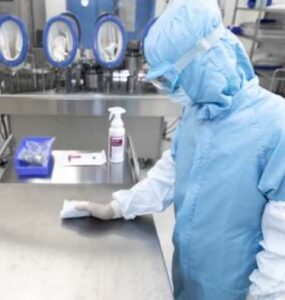 Arguably one of the greatest challenges to avoid is the transfer of bacterial spores into the Grade A environment. Spores can pose a significant contamination risk to aseptically prepared products. An important step for reducing or controlling this risk is to prevent spores first being transferred from Grade C to Grade B as items are moved through a transfer hatch or material airlock (MAL).
Arguably one of the greatest challenges to avoid is the transfer of bacterial spores into the Grade A environment. Spores can pose a significant contamination risk to aseptically prepared products. An important step for reducing or controlling this risk is to prevent spores first being transferred from Grade C to Grade B as items are moved through a transfer hatch or material airlock (MAL).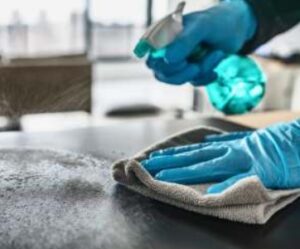 Standard Operating Procedures (SOPs) should detail the types of disinfectants used, methods of application and details such as contact time, rotation, and residue removal. For transfer disinfection the SOP should be able to differentiate the risk-based categorization of routine from non-routine items. Proactive risk assessment for routine and non-routine items which includes cleaning, disinfection, and any associated environmental monitoring, should be developed.
Standard Operating Procedures (SOPs) should detail the types of disinfectants used, methods of application and details such as contact time, rotation, and residue removal. For transfer disinfection the SOP should be able to differentiate the risk-based categorization of routine from non-routine items. Proactive risk assessment for routine and non-routine items which includes cleaning, disinfection, and any associated environmental monitoring, should be developed.References:
1. European Commission – EudraLex Volume 4, Annex-1, Manufacturing of Sterile Medicinal Products, August_2022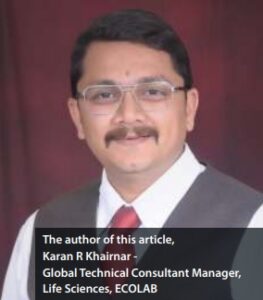
Articles
By Satish Desai
By Karan R Khairnar






